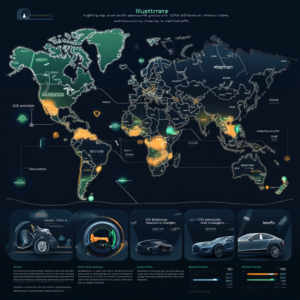
Embracing Agentic AI Growth: Microsoft Unveils MS365 Copilot Agent Debugging
In the wild and thrilling landscape of artificial intelligence, we find ourselves standing on the precipice of a revolution—welcome to the age of agentic AI. Picture it: AI systems that not only assist but take the reins, making decisions without you having to lift a finger. This isn’t science fiction; this is Microsoft striding boldly into the future with its latest creation, Microsoft 365 Copilot. This tool is not merely an upgrade—it's an entire ecosystem designed to amplify productivity and streamline workflows. And guess what? Microsoft has recently dropped a massive bombshell: they’re rolling out agent debugging capabilities within Microsoft 365 Copilot. Buckle up, because we’re about to explore how this landmark innovation is reshaping the game for developers and everyday users alike.
First things first, let’s clear the air about what Microsoft 365 Copilot really represents. It’s more than just a fancy tool on your desktop; it’s a robust companion that has been meticulously crafted to enhance collaboration and boost workflow efficiency. By marrying the power of AI agents with everyday applications like Word, Excel, and Outlook, Copilot transforms mundane tasks into seamless experiences. But, as with any sophisticated gadget, the question arises: how do we keep these digital minions on the straight and narrow? Enter the infamous challenge of debugging AI. Anyone who has dipped a toe into the waters of AI development knows that debugging these algorithms can feel like trying to solve a Rubik's Cube blindfolded. The unpredictable behaviors, the complex decision-making processes, and a notorious lack of transparency create a debugging nightmare.
Now, let’s dive into the crux of Microsoft’s latest breakthrough: agent debugging in Microsoft 365 Copilot. Microsoft has elevated the debugging game with newfound capabilities right within the Copilot interface. Want to unlock a treasure trove of debugging tools? Just type -developer on, and voilà, you’re in developer mode! This isn’t just some arcane command; it’s a gateway that arms developers with critical insights to troubleshoot their AI agents more effectively. With these newfound powers, developers can work out the kinks and ensure their agents are performing efficiently. It’s almost like being handed a magic wand in the land of tech!
Let’s break down what this agent debugging toolkit entails. First up, we have Agent Configuration Insights. This feature allows quick identification of active capabilities and their configurations. You’ll know what your AI agent is up to, right down to the nitty-gritty details of action setups and knowledge scopes. Next on the list is Improved Execution and Performance Monitoring, which is just as thrilling as it sounds. Developers can analyze success and failure rates, track execution details, and keep a keen eye on API plugin responses. Who wouldn’t want to optimize their workflows like a performance wizard?
And it doesn’t stop there—a suite of Observability and Troubleshooting Tools swoops in to save the day. By employing standardized identifiers like agent ID and conversation ID, developers can enjoy better visibility into their agents’ behavior. And for the data-hungry among us, the new Quick Copy Debugging JSON feature makes it nearly too easy to share debugging details seamlessly. Shared data just got a serious upgrade, making collaboration feel like a walk in the park.
But Microsoft isn’t just tossing developers a life raft; they’re also diving deep into the murky waters of security with their Security Copilot platform. Here, agentic AI is wielded like a double-edged sword—providing frontline defense against cyber threats while also tackling the complex challenges of data security. Microsoft is set to unleash a cadre of autonomous AI-powered agents designed to take on the daunting tasks of phishing detection, data protection, and robust threat analysis. With a preview slated for April 2025, this commitment to harnessing AI as a vital part of our digital defenses is not just commendable; it’s essential. With over 30 billion phishing emails detected last year alone, you can easily appreciate the urgency behind these innovations. By integrating AI agents into their security frameworks, Microsoft is not merely keeping pace; they’re setting the standard for proactive protection against the ever-evolving threats of the digital landscape.
As we stand at the crossroads of agentic AI and security innovation, the implications are vast. The new capabilities in Microsoft 365 Copilot and Security Copilot point towards a significant shift in how we interact with AI systems. By empowering developers to debug and optimize their AI agents more effectively, Microsoft is opening up an exciting frontier in the realm of AI-driven solutions. This isn’t just about tech enthusiasts or corporate giants—this is about every organization striving to navigate the convoluted labyrinth of digital operations with confidence and security.
For developers eager to streamline workflows or organizations seeking to fortify their cybersecurity defenses, the present moment is ripe with opportunity. Embrace the journey into the future of AI and discover what agentic AI can do for you.
Before we part ways, let’s make sure you’re not left in the dark. The world of AI is fast-moving and ever-changing, so staying informed is crucial for anyone wanting to keep their edge.
Want to stay up to date with the latest news on neural networks and automation? Subscribe to our Telegram channel: @ethicadvizor.

